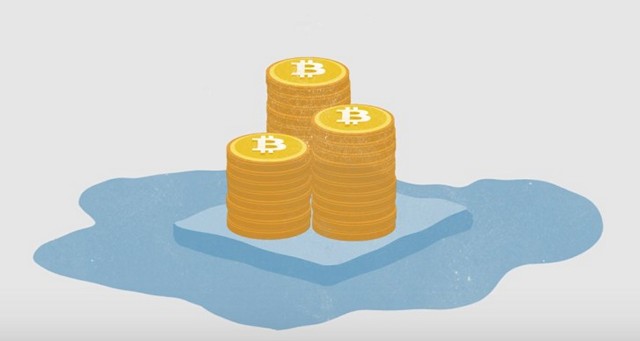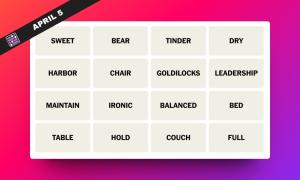The world is abuzz with the term Bitcoin and with a good reason — it has reached $1064 in value against the US dollar. You’ve probably read a dozen articles explaining Bitcoin and still couldn’t understand what it actually is. Let me be very frank — Understanding Bitcoin can be really challenging. So, I’m here to help. I’ll help you to understand Bitcoin in the simplest manner and answer most of the questions surrounding it. Let me do a quick breakdown how we’ll be learning about Bitcoin.
First, we’ll quickly go through fiat currency — a currency established as money by government law. A quick look through it will enable you to contrast it with the way Bitcoin works. We’ll also briefly see why exactly would you want to use Bitcoin over fiat currency. Next, we will advance to actually understand Bitcoin terminologies, followed by how a Bitcoin transaction takes place. In the last part, I’ll discuss why Bitcoin has value. Brace yourself. This is going to be a great, long read.

Traditional Fiat Currencies
As Wikipedia puts it, fiat currency is a currency established as money by Government law. The US dollar, Euro, Indian Rupee or very much any national currency would come under this category. In any country, the Government and the Bank are the controlling authorities of fiat currency. They control the currency production and make transactions on behalf of the user. The bank is responsible for maintaining the ledger.
A ledger is an account book, where the bank stores all the transaction history related to all of its users. So for example, I decide to write a cheque to you. The bank will transfer the money to your account and update the ledger to reflect my new total balance.
Financial Censorship in Banks Accelerated Bitcoin’s Growth
Banks may have all sets of problems including currency exchange fees, lengthy delays or check bounceback. But more importantly, people are questioning the main theme — why should Governments and banks be allowed to execute total control over the currency?
While there’s no denying that banks are highly organised systems but resting all the power in a central authority poses a big risk to freedom. For example, remember how Chase bank shut down bank accounts of some pornstars in Los Angeles in 2014 without even explaining them? Or how in 2011 the US Government partnered with many banks around the world to block donations to WikiLeaks — a whistleblower organisation that exposed Government corruptions. Wikileaks turned to accept donations via Bitcoin and has received more than 4000 BTC as of now. (1 BTC equals $1064 as of today, so do the math!) So what exactly is Bitcoin and why did WikiLeaks choose it?
What is Bitcoin?
Bitcoin is a decentralised, peer-to-peer virtual cryptocurrency that can be used to make payments over the Internet.
You’ve probably read this definition everywhere but still can’t get over the information overload, right? Let me simplify for you what it really means.
-
Bitcoin is Decentralised and peer-to-peer currency
Bitcoin is not controlled by Governments, banks or any other central authority. It is controlled by people all over the world collectively. If you’re a part of the Bitcoin network, you are a part of the controlling authority.
You can pay anyone in the world without needing any third party like a bank to validate the transaction. Bitcoin transactions are carried out collectively by the network. This type of system where the transaction takes place directly between both the parties is known as a peer-to-peer network.

-
Bitcoin Is a Virtual Cryptocurrency
Bitcoin is not an actual currency note/coin that you can hold in your hands. Rather, it is a virtual currency which comprises of two parts — a public key and a private key.
You display your public key so they know where to send you the money. A private key is, unsurprisingly, private. It is used to “sign” a transaction, so that other users over the network can verify the transaction has actually been performed by you. Anybody with access to your private keys can spend your Bitcoins. As there’s no central governing authority, keeping your private key a secret is of paramount importance.
Bitcoin is called a cryptocurrency because mathematical cryptographic techniques are used to generate and regulate Bitcoin. This will become more evident in the next section where we discuss how Bitcoin is generated.
-
Blockchain is Bitcoin’s Public Ledger
When a transaction is made on the Bitcoin network, the change is reflected on a ledger. Unlike a bank’s ledger, which can be seen only by select bank officials, Bitcoin’s ledger is public and known as Blockchain. Transactions all over the world are recorded in a “block” and these blocks chained together are known as Blockchain. A new block is generated every 10 minutes, which is the reason why transactions over the Bitcoin network take 10 minutes to complete.
The Blockchain is at the heart of Bitcoin network, as it is responsible for protecting its integrity. For instance, what if somebody maliciously intends to tamper with the transaction data? Well, remember the private key? It is used to digitally “sign” each of your transactions, so as to ensure that the transaction was actually performed by you. If somebody still somehow happens to tamper the transaction data, it will be invalidated as other blocks over the network won’t agree with the tempered data. Are you starting to see the benefits of having a public ledger?

As Blockchain is public, anybody on the Bitcoin network can see transactions history and current balance associated with a public key. Of course, if somebody knows that a particular public key belongs to you, they can uniquely identify it as your account. In fact, you can head over to Blockchain’s website to see all the transactions that are taking place in real-time. Bitcoin wasn’t made to be an anonymous network, after all. As a result, certain other cryptocurrencies like “Dash” have emerged with the promise to add anonymity.
How is Bitcoin Generated?
The process of generating a Bitcoin is known as Bitcoin mining. Basically, miners are enforced with two different tasks:
The first one is solving complex mathematical functions with the use of powerful computer hardware and a mining client. These mathematical functions were put into place by the Bitcoin algorithm to control the supply of Bitcoins globally. For example, it’s a given that solving a particular problem takes a certain amount of time and appropriate computational resources. This ensures the control of generation of new Bitcoins. In fact, the algorithm was designed in such a way that a maximum of 21 million Bitcoins will be in circulation, ever.
Secondly, these miners are responsible for providing the computational resources for updating the public blockchain for all the users connected to the network. Everybody on the network holds a copy of this blockchain and can see previous transactions made by anybody around the world.

-
Miners are Rewarded with Bitcoins
In return for all the hard work, the miners are paid back in Bitcoins. When Bitcoin was first created, the reward was set at 50 Bitcoins per block mined. The reward halves every 4 years. There have been two halvings till the end of 2016. At the last update, which happened in 2016, the reward was reduced to 12.5 Bitcoins per block mined.
-
Can I Become a Miner?
Of course. Mining in the earlier days of Bitcoin was possible through your regular desktop GPUs. However, the competition has increased and the cryptographic solutions are becoming harder to solve. Today, mining with your desktop CPU/GPU is no longer profitable. There are a large number of ASICs built especially for mining purposes and you’d be required to purchase one of those.
You also need to consider the electricity consumption charges, as it’ll require being active all the time. Also, consider the cooling charges and space rental charges associated with it. Investing money in buying all the powerful stuff requires a lot of planning. That’s not to deter you from becoming a miner. With the appropriate hardware and a mining software, you’d be good to go.

How Does a Bitcoin Transaction Work?
Enough with the terminologies. Let’s see what happens when Ben decides to pay John via Bitcoins.
- First, Ben enters the amount to send and enters John’s public address. The public address is a sequence of randomly generated letters and numbers, which can be displayed publicly to receive money to your account. Meanwhile, Ben’s private key “signs” the transaction to verify that the transaction has actually been performed by him.
- Now, the transaction reaches the Bitcoin network. Here, the miners work to verify and add the transaction to a block, which can take up to 10 minutes.
- The amount gets deducted from Ben’s account and John receives the money. The transaction is now reflected on the Blockchain and is publicly visible to anyone over the network.
One important thing to understand is that a Bitcoin doesn’t actually point to anything — neither a digital nor a physical entity. Rather, there are only record of transactions all over the network.
Now that you’ve brushed up on the Bitcoin terminologies, I bet you still have a burning question unanswered —
What Gives Bitcoin Value?
Let me start with a simple question. What makes the paper in your pocket worth more than any other ordinary paper? It’s just another piece of paper, after all. The answer is, you guessed it, it’s backed by a Government mandate. The fiat currency gains its value from the fact that it’s enforced as legal tender by the Government.
Unlike fiat currencies, Bitcoin’s value does not come from any legal force, but from consensus. So why did people arrive at a consensus to accept Bitcoin as a payment method? Because Bitcoin solves all the issues plaguing the current centralised monetary system. For starters, here are some advantages of using Bitcoin:
- As there will be a maximum of 21 million Bitcoin in circulation, ever, it is not prone to inflation.
- It cannot be counterfeited because all the transactions are stored in a public ledger.
- It can be exchanged anywhere in the world instantly without the need of third-party institutions like banks.
- It has minuscule transaction fees associated with it, unlike the Western Union and similar services.
As more people are weighing Bitcoin’s advantages against traditional money, they are turning to Bitcoins. This results in increasing demand and hence ascends the value of Bitcoins. Furthermore, as the supply of Bitcoin is fixed, the demand will keep rising and so will Bitcoin’s prices. Of course, there are a lot more economical factors (beyond the scope of this article) that control the price of Bitcoin. We’ll rest the case in the hands of economists from here.
SEE ALSO: 5 Alternative Cryptocurrencies like Bitcoin You Can Use
Understand Bitcoin Better?
The Bitcoin network can be complicated to understand. But I do hope your hold on the Bitcoin system got a little firmer with this article. As it is such a vast topic, covering every aspect is pretty challenging. Thereby, I encourage you to shoot any doubts you have in the comments section below.



















So… how does someone change a bitcoin for regular currency in order to spend it ? I mean the local grocery store doesn’t take bitcoins and not everyone has a computer…
Hi Doug! You can exchange your Bitcoins for regular currency using any of the Bitcoin exchange sites. LocalBitcoins is one such popular website. Give it a try and let me know if you face any difficulties!
As you said that generating a bitcoin being a miner as of now is not easy so what is the other way i can get bitcoin?
Hey there Anuj! You can buy Bitcoin from various Bitcoin exchanges. If you are based out of India, Unocoin is a great place to start!